Is It a Bad Time to Be a Young Car Enthusiast?
Nearly 20 years ago, I was in high school and riding to Thunderhill Raceway Park with Bruce Trenery, a vintage car dealer. During our trip, he articulated his predictions for the future of enthusiasm for cars. In addition to his concerns about the regulatory environment, he was most disquieted by his perception that young people just weren’t interested in cars any more. As a young person who was (and remains) immensely passionate about cars, I was initially put off that the latter idea could even be possible, but after reflecting on the interests of my contemporaries, it alarmed me because I could see a lot of truth to it.
While car enthusiasm today isn’t ubiquitous the way it might have been in the era of Grease or when the Beach Boys released “409,” Trenery’s foreboding apprehension remains mercifully unfulfilled. In fact, I have been delighted to observe what almost feels like a resurgence in passion for cars among young people in the past two decades. Attending events today, especially more approachable ones like Radwood, I’m always struck by the number of obviously enthusiastic teenagers and twenty-somethings, especially given that the cars concerned are often older than they are.
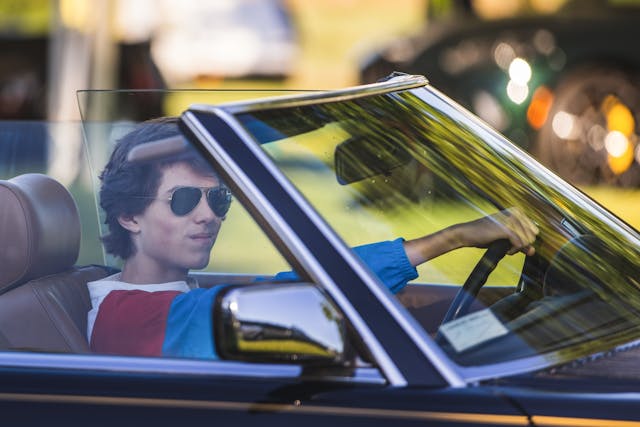
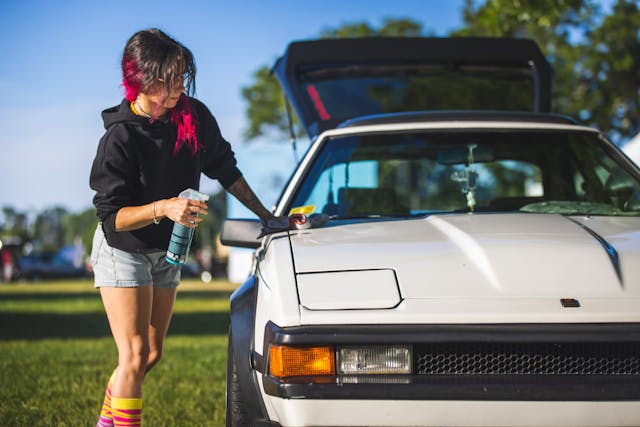

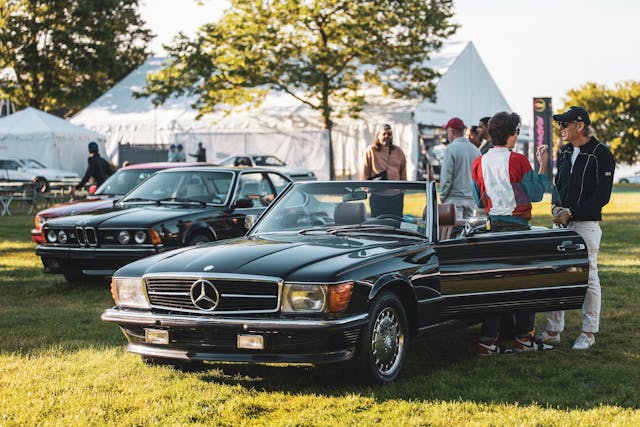
The emergence of social media has doubtless played a big role in spreading enthusiasm: The dynamic and sensory nature of cars (i.e. they move, they’re shiny, and they make loud noises) means that they lend themselves perfectly to the mediums of photo and video. Teenaged “spotters” wandering events, camera in hand, become the purveyors of beautiful media that portrays our cars in fresh, original ways. While it is gratifying for us to look at pretty images, the rise of spotters does something essential for young people, too—it gives them a meaningful way to interact with cars (and often their owners, too) that they couldn’t otherwise do, regardless of whether that’s in person or on their phones.
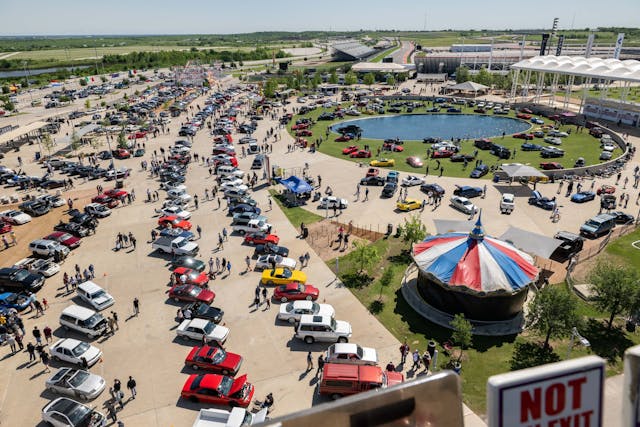
That’s particularly fortunate since the barriers to entering this space as a participant—that is, as a car owner rather than an observer—are higher than they have been since at least the end of World War II. This is tragic but incontrovertible based on three interrelated factors, all of which converge to make things tough for young enthusiasts. These are, in order from broadest to most granular: 1) macroeconomic shifts 2) their consequences on the new car market 3) the resulting impact on secondhand enthusiast cars ranging from lightly used late model cars to full-fledged classics.
The core of the macroeconomics discussion as relates to young people is disposable income. Simply put, young folks have a lot less of it than youths did in previous decades. This is the result of too many things to discuss in detail here, but the rising costs of real estate, education, and healthcare at rates that exceed the growth of wages are major drivers. These affect people of all ages of course, but for young people who do not yet own any real estate to help their net worth grow, and for whom the ever-increasing cost of education (and the near necessity of student debt) is greater and a larger share of their liabilities, these economic realities are far more restrictive. This means that even if car prices were stable (they’re not), young folks would be less able to participate in the market because they simply don’t have the disposable income to enter it.
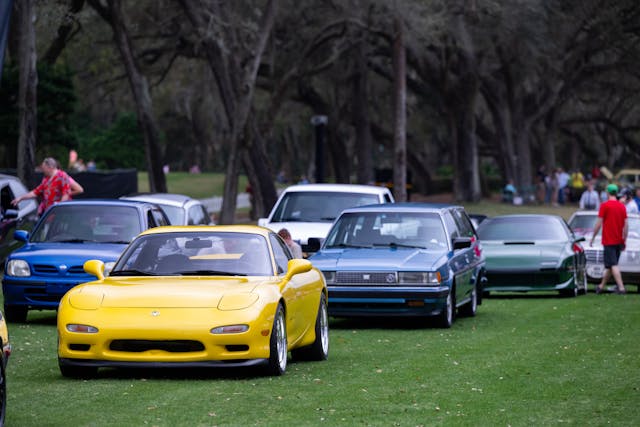
Real wages have been stagnating for decades and the consequences of this long-standing trend have been manifesting themselves in the new car market since at least the 1990s. In short, as people have less disposable income, they buy fewer fun cars and manufacturers respond by killing them off because they sell poorly.
Let’s take a journey back 30 years to 1994, when there was a whole host of enthusiast cars available at both entry and higher price points. Effectively the entire sport compact genre, including: Honda Prelude and Del Sol, Nissan Sentra SE-R and 240 SX, Toyota MR2 and Celica, the Mitsubishi Eclipse (and Eagle Talon and Plymouth Laser) and 3000 GT (and Dodge Stealth), the Ford Probe, the Mazda MX-3 and MX-6. Go back another 20 or 30 years and the story is similar: Fiat 124, Alfa Spider, Datsun Roadster, Triumph TR, MGB, and big Healeys. This to say nothing of pony cars and muscle cars from the ‘60s and early ‘70s.
Today, these cars and their ilk are nearly gone from manufacturer lineups. There are precious few reasonably priced sporting survivors: the Mini (which recently lost its manual for the US market, as has Volkswagen’s GTI), the Subaru WRX, the Mazda MX-5, and the Toyota GT-86 (and BRZ), which is most realistically the spiritual descendent of the 240SX. This is not part of some draconian plot on the part of manufacturers to deprive us of driving enjoyment and modernity in the same package, but rather their response to market forces. One needs only look at MX-5 sales in 1991 (63,000 units) vs 2018 (27,000 units) to see that consumers aren’t buying sporting cars the way they once could, despite today’s Miata costing less than it did in 1991 when adjusted for inflation and there being fewer other enthusiast choices at comparable prices now.
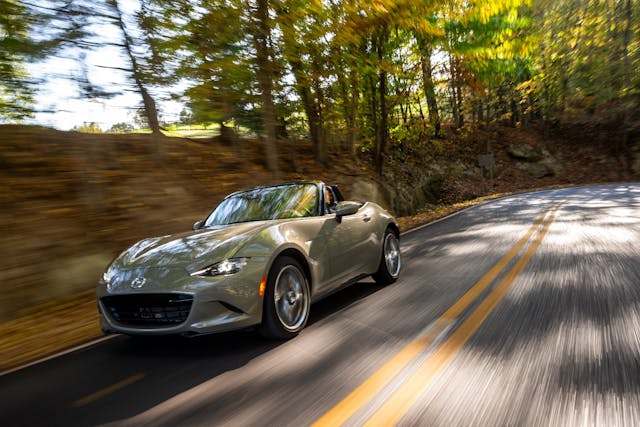

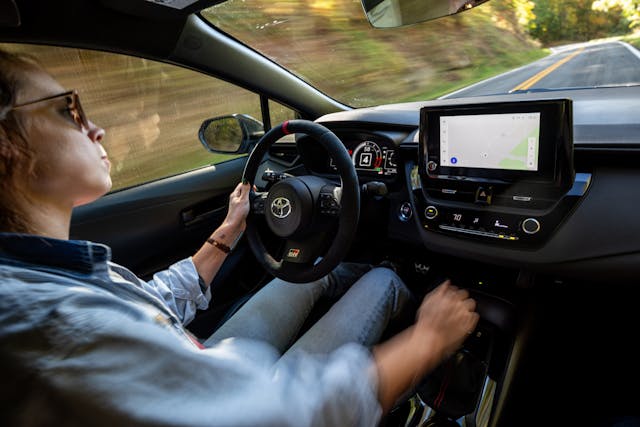
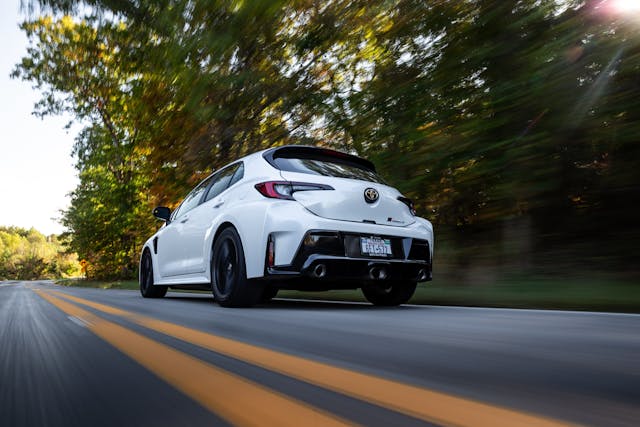
This lack of appealing new affordable options for the driving enthusiast has predictably disheartening consequences for secondhand cars of the same ethos, whether they’re four years old or 40 years old. The decreasing sales of these cars when new in recent years means that supply for used options is tight and thus depreciation is low. This, coupled with the fact that 30-year-old cars are pretty usable in modern traffic, means that more and more enthusiasts are turning to Radwood era (1980-99) cars.
In 1994, driving a 30-year-old enthusiast car meant giving up a lot of usability and performance. You’d have to deal with carburetors, marginal brakes, tires, suspension, and acceleration, catastrophic rust, poor weather sealing and ventilation, and a host of other unpleasantries that we don’t generally have to contend with in a 30-year-old car today. Similarly, cars of the Radwood era are easier to live with than more modern ones, albeit for completely different reasons. They’re much simpler than newer cars, lacking most of the sensors and computers that handle everything from HVAC to the powertrain to radar cruise control. Even something as simple as replacing headlights has been completely transformed: compare the 5.25” and 7” sealed beams in a BMW E30 or NA Miata to a $1500 Xenon assembly in a car from 10 years ago.
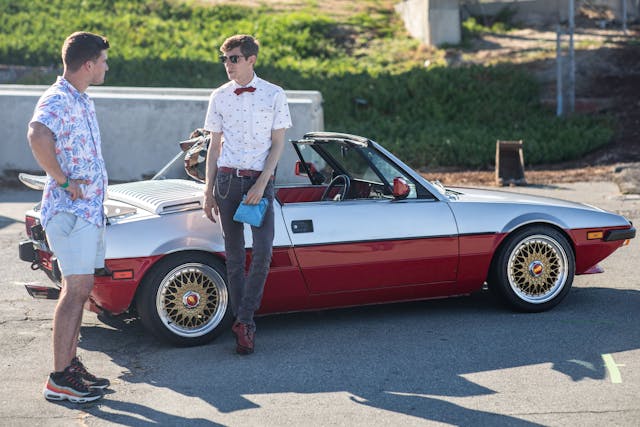
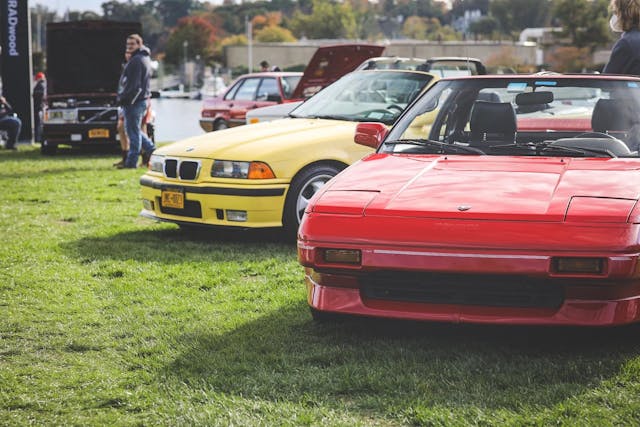
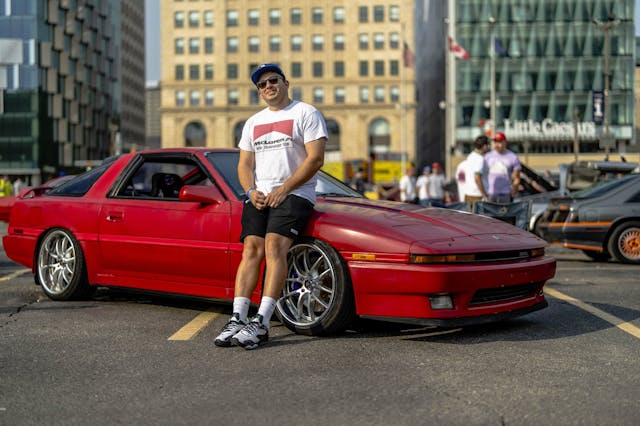
The result is that cars of this era are sought not only by Generation X and millennials who lusted after them in their youths, but by Generation Z too, who are pushed toward them by the dearth of affordable and appealing newer options and pulled toward them by the intrinsically appealing characteristics such as the experience of interacting with them and the variety of options, along with their simplicity and accordingly sensible running costs. The tragic result of this growing demand is that cars of this era have appreciated in value, making it even more difficult for young folks to buy into the market.

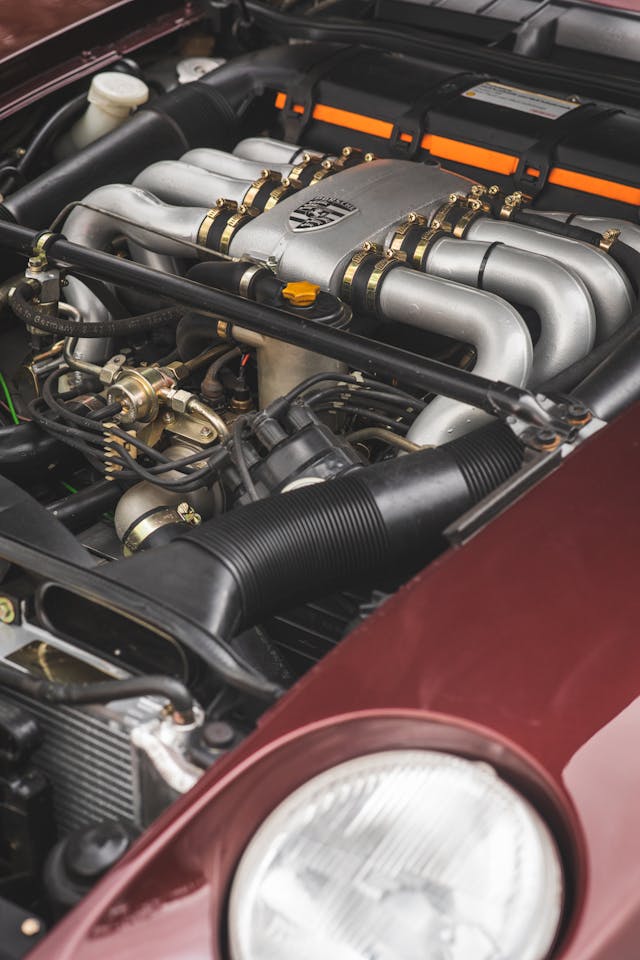
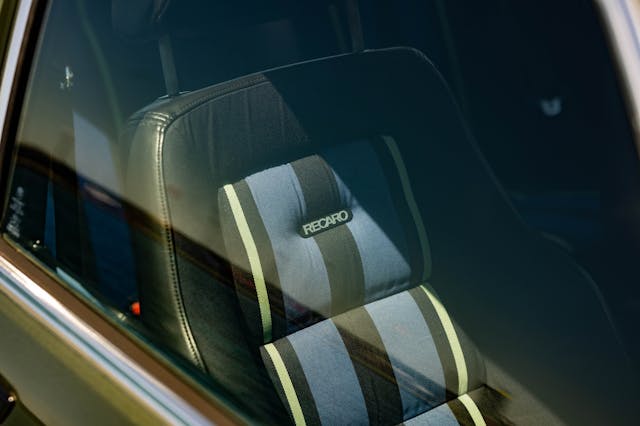
The silver lining (for us car nuts anyway) is that car enthusiasm is still very much alive and well, even if it takes a bit more diligence. For young enthusiasts, there are many interesting options at reasonable prices if they’re willing to go off the beaten path a bit. Mainstream enthusiast cars like M3s and air-cooled 911s are prohibitively expensive, but plenty of other options do still exist like non-M BMW E36s, early Boxsters, or several generations of the Mustang. For those less concerned about sporting intent, a host of other Radwood attendees remain attainable, from a Toyota Century to the world’s cleanest 1989 Oldsmobile Toronado Trofeo.
This may be feeble consolation in the face of larger economic forces, and young enthusiasts approach the hobby through different literal and figurative vehicles than in years past, but there’s no question that they remain highly engaged. I for one am delighted to see their passion and look forward to seeing how the resilience of the human spirit inspires them to express that passion in ways that generations before them never considered.
***
Check out the Hagerty Media homepage so you don’t miss a single story, or better yet, bookmark it. To get our best stories delivered right to your inbox, subscribe to our newsletters.



Look while there are sone kids around today at shows it is nothing like it used to be.
40 years ago hundreds of cars would gather in every town on Saturday and Friday nights. We had a few older people but most were around 16-20 years old.
We were the kids that grew up riding in RWD American cars in the late 60’s and early 70’s. We grew up in a car culture and Hot Rod culture. We read Car Craft in class and dreamed of getting that car we wanted be it a GTO, SS, 302 or Super Bee.
Look we could buy most any hood muscle car for $2000. Most need little work and we could make them faster. I had three cars at 20 years old all #2 cars, a Chevelle SS with a tunnel ram, 72 GMC Sprint SP with a Big Block and a 70 Monte Carlo. Cars were dirt cheap.
Today nothing is cheap. First you have a hard time finding a good RWD cheap. Rusted out Nova’s are going for $15K. A kid can’t buy it and then they can’t fix it up.
Second most younger kids are not interested in work. I did Collage and work 6 days a week. Few will do that.
Computers, video games and net are their thing. Cars are just transportation. Many grew up in a Civic and Camry and that died not do to you what my fathers 5 Chevelle’s did for me.
I have worked in the performance market too and the customer demo is older now than ever.
I went to a cruise in not long ago and most folks there were 70 plus years. I took a photo where they sat in front of cars like a new ZL1 Camaro but they have Walker canes and even some power scooters.
While not dead the market to youth is dying. They may enjoy watching but owning often is a pipe dream till later.
I hear ya but the gear heads are out there. And it’s building up. The more things go electric the more the rebels will show up. I have run across a lot of ‘kids’ here in the PNW doing it right. The future isn’t as bleak as some think. Suck, squeeze, bang, blow still means something to youngsters.
I hate to tell you but there is not going to be some great revival.
We in the industry are trying to find exactly our place in the future. We have diversified to the point we used to sell real race car chassis. Today we are now selling Simulators and computer hardware to play them.
I do see many kids that want to be a part of the culture but they can’t afford it. We were just talking prices of a 1650 Holley Carb. It used to be $39 at one time. Not anymore. Paint on cars was $4k for a good job. Now it is $15k just starting to get a good paint.
My son even just got a great job right out of Collage. No Debt. Yet he admires cars but no real love.
Heck my Hagerty insurance will not let me put him behind the wheel due to his age. Yet he can afford a C8 now.,
Also the EV problem is far from resolved. Majority still does not want them but we are fighting a group that no matter how the election turns out will still likely keep their regulations in place. Being CARB and that affects 44% of the market.
The future is going to be tough too with the oils we need for older cars being discontinued as well as the threat of more ethanol in Gas that we have.
The 80’s and 90’s will be the high point of the auto culture. There will always be some form of it but it will be much different.
I feel more positive about the younger generation, but yes, it is changing. If you going to talk about college in the context that you do, it seems off to not spell it correctly. I personally think college is overrated and many times it isn’t needed for the careers they choose. The time and money spent have actually put them behind.
It is needed for developing critical thinking skills, though.
Without those skills, we have monotone and shrill representatives elected into Congress who refer to petri dishes as “peach-tree dishes”. Google it and check out the video if you don’t believe me.
I think that there is some truth in what you are saying but I think that some enthusiasts with some… years under their belt have a rather bleak point of view on younger enthusiasts and instead of connecting with them to find out what makes them tick, I think that there is a tendency to make conclusions for them and their motivations (and lack in some cases). Hot take, but ask a Millennial or a Gen-Z and they’ll tell you that Boomers ruined the economy and housing market for them but blame them for not working hard enough and if they ate just a little less avocado toast, they could afford nice things too….
I have found that younger enthusiasts tend to avoid traditional car shows and cruise ins. The grumpy old guy sitting in a fold up chair behind their Corvette is not a good entry into the hobby. Instead informal meet ups set up via social media and cars and coffee events are more interesting. I also don’t see enough outreach from older enthusiasts to younger ones, which isn’t helping anything. They talk about them not being interested in real cars like Chevelles and Chargers, but I am confident there were similar complaints leveled at Boomers about Model A’s from their predecessors.
I don’t think that all kids are eco warriors or disinterested. I think that is a narrative that we create for ourselves based on media pundits (on all ends of the spectrum) and too little critical thinking for ourselves.
Derek Tam-Scott is right the entry point is much higher compared to income for cars. But that doesn’t mean that you can’t get in, you just have to choose your entry point and enjoy it and work to the next step.
Spot on.
Yes, I agree, pretty spot on – except that I’m a Boomer and I’ve always appreciated Model A’s! 😜
Late 20s-guy here. Can’t disagree with a single thing you wrote. And few people my age would.
And to touch on the fact that “the entry point is much higher compared to income for cars”. This is the reason I and some others have moved more in the direction of motorcycles. They’re still (largely) affordable, even new. I don’t have a prayer of owning a new or recent-year car that I would actually enjoy but there are plenty of fun bikes in my budget range.
Were you an English major in Collage?
I see what you did there…😜
I know now, I should of went to Collage instead of College, damn it
Funny – I experienced both at the same time. I was an art major. So we glued small things together to make a larger image as an assignment in my Freshman year. A collage in college, if you will.
*I don’t disagree with HyperV6’s assessment or experience. I think many factors have fed into the current situation, here’s a tiny bit of my thoughts on this:
Look at the street rod events and clubs that had a 1948 and earlier cut off for decades.
This was preceded by the exclusionary attitude of the “full classic” movement that only accepts “distinguished… etc.” cars.
Many things have (finally) let that go. NSRA looks like it is running a 30-year-old rule.
Here’s the thing though… youth drive the 7-20 year old cheap vehicles if they can even afford that. Used to be 5 years old, but inflation has been outpaced in vehicle and insurance costs. (and gas too where I live, we are taxed madly).
So the kid driving the hot rod 57 Chevy in 62 would be your kid driving a stanced 2016 Civic or Jetta today.
One of the youngest people I work with drives a 9 year old Lancer. Custom paint on hood, rims, looks lowered. Funny decals in window. This is a car person… does their car get covered here? Are they welcome at the event with the LS-swapped Camaros and Chevelles? It’s not a pristine example, and gets daily-driven.
The road I live on can be part of a scenic drive. At times we see little convoys of late-model Miatas, Porsches and such go by. Those are car people too —but I don’t see them at the local cruise-in shows.
Building gates into the hobby or fences? That’s my point I suppose (without writing an essay to get to it).
I just want to know the story of the young woman and her Apple “sponsored” Porsche 944. 🙂
Every picture has a story and there are lots of pictures and no captions. One of my biggest pet pieves. Imagine how great she would feel if her story was told here; even a little of it.
(and Hagerty, please PLEASE explain the “your reply was too fast”)
I found this with a Google image search https://flatsixes.com/cars/porsche-944-cars/this-porsche-944-is-an-excellent-retro-homage-to-apple-computers-racing-days/
Interesting. I didn’t know Apple raced at one time.
I’m an old car & motorcycle guy who works as a volunteer at a classic car museum. I see young people (mostly guys) who still love cars. As others have commented, however, there are fewer than in my cohort. Young enthusiasts face more challenges than I did.
One challenge is the growing complexity of modern cars that makes it difficult to work on one’s own car. Part of the joy and accomplishment of owning cars in the past was in developing the skills to service and repair our own cars. When I was in my 20’s, less than $100 in tools and manuals could allow me to fix a lot of what went wrong with my car. I added tools along the way as needed and it was affordable. It felt so good to put my car back together and take it out on the road. Older cars broke more than today, but it didn’t cost so much to repair them.
Today’s cars require more expensive tool collections to maintain and repair. It is much more difficult to work on modern cars. Many young enthusiasts will never know the sense of accomplishment of repairing and rebuilding their cars because of the expense and complexity of modern cars.
However, while the nature of individual transportation will continue to change over time, there will probably always be some form of car enthusiasm among young people. This period may well be another malaise era for the automobile that may pass.
Yes cars have changed dramatically over the past fifty plus years but the kids who grew up with their tech (and tech in general) are impressively adept at analyzing and manipulating it. I have a nephew who helps me with all my ECU and DTC questions while he knows to come to me for fabrication assistance. We’re quite a powerful team when any wheels stop rotating.
Last week I went to a car show at my old high school. It was held on Thursday so that kids would be there to see cars and talk with owners. It was put on by the school drag race team – three boys and four girls – who had their machines on display as well. Two of them were pick-up trucks. A few were cars that I didn’t even recognize! They were making do with what they could afford and what they knew. It got me to thinking: when I was a hot-rodding teen, I was doing the same thing. Yes, there were a few “lucky” kids whose daddies bought them something new, but for the bulk of us – well, let’s just say that a 1955 Bel Air hardtop wasn’t a “collector car” in 1965. It was a 10-year-old family car that was past its prime and could be bought for $300. The fact that it became a car that’s worth maybe $30,000 today certainly wasn’t a given. So these kids aren’t buying “classics” – no kidding. We weren’t either! They are buying everyday cars that they are slowly making improvements to. That’s just what I did when I was in high school.
As ringing bells announced class changes and lunch breaks, hundreds of kids came pouring through the show area and many stopped to talk with us old school car nuts and look over our cars. A lot asked for certain cars to be started, or “can I sit in it”? Once, the school photography class came out to take pictures.
I came away thinking that yes, there is a dilution of interest in the car scene compared to my teen days, but upon reflection, the ones who are into it are not much different than I was. Also, they have umpteen more things to pique their interest now than I had. It was good to connect with these young people and learn a bit of how they see the car scene nowadays. Is it different? Sure. But is it dying? No, I don’t see it that way. It’s changing, to-be-sure – but then again, my grandfather and father didn’t expect me to choose draft horses or Model Ts as my passion, even though that was what they used for transportation as teens. It isn’t reasonable for me to think that today’s teenagers should lust after the same vehicles that I did when their age.
True Dub!
Nice article. It’s always nice to get a bit of optimism. I’m an early millennial and have loved cars since I could walk. As a teenager and into my early twenties, a lot of my cohort was interested in playing with cars, pouring money into VWs, Hondas and other things while the bills were paid for by Mom and Dad. My parents strongly discouraged my playing with cars despite my studying engineering and auto mechanics, although I did have a Mk2 Jetta (which, due to space and money constraints, stayed stock) and an old, modest sport bike.
Now at 40, I have one school friend who tracks a 944 Turbo, and that’s about it. I myself have an old Miata that’s seen maybe 15 hours of track time in more than a decade and I resist doing more than maintenance on it because I just can’t justify putting thousands of dollars into upgrades. Money and time go towards housing, career, trying to get some exercise, and I haven’t even started with kids yet.
As Hagerty is no doubt well more aware than I, the classic car market is much more out of reach now than it was 20 or 30 years ago. It used to be that an old Porsche was just seen as a used car; now it’s a virtual heirloom. Even things with arguably less pedigree, like Acura NSX, Mazda RX-7, Toyota Supra, et al, are no longer reasonable playthings. At least we still have older water-cooled Porsches and Corvettes, and the Miatas are good, clean fun.
While I do agree there has been a “dimming”, shall we say, my experience differs a bit. My 24 year old has a hotrodded 2011 Duramax, a rockcrawler Cherokee, and is gathering parts for an S10 swap. My 21 year old has a 2006 GTO and a 2019 Harley Sport Glide. The GTO has a cam, headers, CAI, Tune, a T56 Magnum, and makes 425 hp at the tire. He runs with a large crowd of under 25 guys that have very nice cars, some with over 800 at the tire. They are into roll racing. They have pop up meets, then go to Cars and Coffee the next morning. They HATE the “takeover” idiots. No one needs the extra heat. I had 5 of them in my shop the other night, rolling Camaros, mustangs, etc. I’m always trying to pass on the knowledge.
Then, you go to the C&C events in my fairly large metro area, and there are kids of all races and creeds building whatever they can get their hands on. I appreciate the vibrance and diversity it brings to the scene. Who wants to see a bunch of guys in their 60’s sitting beside their 3 year old Challenger/Mustang/Corvette that they drove to the event at a fast idle? Bring on the foreign stuff, the lowriders, the REAL modded late models, the minitrucks, etc.
None of these kids are rich. Most are blue collar. Most went to trade school. They work hard to have what they want. They work on their own cars. To say these kids “don’t work” is a load of horse hockey. I agree, it’s not like it was in the 80’s/90’s. But it’s not dead, by a long shot.
Agree 100%
What you see is not the norm or majority. You kid is abnormal in this case that is a good thing but he is one of few.
No one said it was dead but it has been steady decline since the 90’s. There will always be an element of the car people but I really don’t see it returning yo what it was.
Just look at the old Car Craft magazine where they would go to cruise ins all around the country msny with over a thousand cars. All night cruising.
Today the gatherings are older yes sone young people but not many.
The point to look at are these. Car magazines are dying, the companies that make the parts are closing and selling out as there is little money made with many parts.
Many performance cars are all top dollar cars. Camaro just died as people figure if I am paying that much may as well get a Corvette. Most others are just not in the market. The Dodges are dead and the Mustang is on life support.
The main market now is 4×4 and Jeep. But now Jeep sales are not what they used to be. Sport compact is a niche segment.
The fact is yes we have some kids participating and we have others wishing.
Even many car clubs are struggling with declining membership. I just read the plea in the Pontiac Oakland club about how membership is dropping with the death rate of members.
This is just the way it is. Being a car guy will become more difficult and more isolate.
As for kids not working the latest Gen is the most difficult to get a good work ethic from. Not all kids but many Lack drive or the motivation yo always give their best.
I beat it into my kids head always show up, always be on time and always give your best effort. This has led him to one of the jobs many of the young kids claim they can’t find.
The world is always changing sone good some bad. You just play the cards dealt and go on.
Look no one is saying there are no kids today participating. They are out there but the numbers are much lower than we have seen in decades.
Some of reasons are clear. Older cool cars are expensive. New cool cars are expensive even uncool cars today are expensive.
Parts are expensive.
As for complicated to modify that is not hard to overcome if you really want to learn what to do. Heck you can turn it into a trade and repair cars then. I recall the first FI units were to spell the doom of modifications but here we are today. A simple flast can add 65 HP on a turbo like I had.
We are also fighting what they are taught. In many areas and schools they literally teach that automobiles are from the Eco devil. They think we are destroying the earth with cars.
Many of these kids have never been in a car that did zero to 60 in less than 10 seconds.
We also have to accept some blame too as in many car circles. the older crowd did not work with the kids with imports and loud stereos. They did not fit their definition of a car enthusiast so they were cast out.
Also kids today are so involved with many other things today sports and the like. Cars are just transportation.
We have hope in C&C and other events rekindling the desire to be involved again. But is it a bit too late?
Too often the young are involved in these street take overs if they do have a car. They also still race but unlike in the past going to a isolated area many are doing it on city streets. Too often in stolen cars.
While things are not deal they are in critical condition and it is a long shot at recovering. There will always be some car people but will it be enough to support the industry of performance cars and parts.
Lets face it the Mopars and Camaro did not go away because they were selling in really high numbers. Even the Mustang is not doing the numbers it really needs. The Affordable Pony car died with the last of the cheap RWD models.
I don’t see where the number of kids who’ve been in a car that goes to 60 mph in under 10 seconds is relevant here. Speed isn’t everything there is to appreciate about cars. That’s imposing our “old guy” point-of-view onto them. Today’s youngsters can – and do – appreciate a LOT of things about vehicles that I never did (or ever will). But the point isn’t to mourn that kids don’t yearn for ’69 Chargers. Kids that appreciate ANY vehicle, for ANY reason, are, by definition, part of car culture.
When you grow up and you feel that car press you back in the seat. The roar of the engine and smell of exhaust is addictive. That is how many are drawn to the automobile.
The fact is there are few cars that kids appreciate. They see them as just a way to get some place.
Let’s face it a Camry really does not stir the emotions. The many cars that may are just pipe dreams for many do to high costs or the high cost to insure.
Their time and money goes else where.
Not imposing anything age wise to this. There is just nothing addictive to a Spark or Kia Soul.
There is just nothing cheap or affordable that is worth much investment in them. In the past we could buy a car right and double our money. I did it with a very uncool Galaxie Sedan.
Times are different, costs are different and many priorities are not the same. It is what it is.
With all due respect, you ARE imposing your own values in your opinion. I’m willing to bet there are a LOT of Camry and Soul owners out there who have as much passion for their favorite cars, even though they don’t get “pressed back into the seat” while driving them. I know what excites ME, but I also realize that the same things may not excite the next person. Maybe for them it’s just the seats, maybe the paint, maybe a lot of camber – who knows? I might say I hate it, but if they love it, they ARE car people (just not your or my type, maybe, but car people just the same). I know you will argue here, and never agree to what I’m saying – you and I have danced here before – but all I’m saying is try not to impose your values upon the bulk of young people out there. They are entitled to their own way of looking at things – cars included.
With that, I’m out.
With all do respect show me someone with Camry passion at an automotive event. No NASCAR is not included.
There are few cars that inspire passions and nearly none at a low dollar except a Miata and it’s not what it used to be either gaining weight and costing more.
The fact is I work with and for auto enthusiast and the fact is the passion for cars has turn to about the kind of love you have for an appliance.
Just because you own a red Camry Civic and like is not true automotive passion or lifestyle.
We only dance as you comment on my post. I generally never read much of yours.
I just express what I see, know and feel. If you agree great if not ignore or if you respond expect me to reply.
Poke the bear….
You’re a bit tiresome and tedious, and worst of all, a bad listener.
With all DUE respect.
“With all do respect show me someone with Camry passion at an automotive event.”
I once drove by a late model Camry group have a meeting at a local park. Their cars are lowered, have bigger wheels, spoilers, etc. all the stuff you’d expect on any 2000-2020 custom car.
Anyone who has driven a V6 model knows it’s faster than most “muscle” cars. After renting a Camry LE four banger with 200hp and an 8-speed auto, I think its about time we even give the four bangers credit where its due. That sucker was a lot of fun on the highway: fantastic handling, almost-fantastic power, amazing economy.
“Just because you own a red Camry Civic and like is not true automotive passion or lifestyle.”
That wording and perspective is a well known fallacy. I’ve read enough of your ramblings on this site to know you are smarter than reducing yourself to using such dumb arguments. Do better.
Line up next to a 2000s V6 Camry and get back to us. Those things are quick by any standard and yes, there is a group of people who love them.
Hyper, You need to lay off the Camrys, Obviously you have never driven a V6 model.
Also Please Turn On Your Spell Check! You come across as an ill informed person that is just spouting off. I find it very offensive especially since I worked with you and at the time you were a supervisor that was checking our performance.
As for kids today, yes it is extremely expensive for them to enter the hobby unless they are working on some rice burner. Also, not all are car nuts anymore because they have nothing but computers to play with. It is up to us to educate them.
Take the time show the kid your car and answer the questions no matter how stupid they may seem. Remember, You were once the stupid kid.
Hey hyperv6. I think that a lot of your concerns come from a narrow view of the hobby. Try expanding your horizons a bit and I think the bleakness of your commentary is leaving everywhere may soften a bit. As usual, there is a lot of opinion here and a lot of speaking for others from the “old enthusiast” point of view, which only helps preserve the old guy point of view.
Look, I get you are in the industry, which grants you a bit of clout, but nobody asked for a pundit either. More constructive commentary, please.
I cringe a little at some of the complaints leveled at the younger generation here. I think they come from a somewhat skewed and skeptical type of person.
Of course they’re not heavily invested in buying a Chevelle or a Nova! They didn’t grow up with them and their parents and grandparents generation drove their prices out of reach! I am sure similar wailing and gnashing of teeth was had by the Classic Car Club of America participants when Baby Boomers weren’t buying and tinkering with stock Model A’s or Duesenbergs.
Yes, the hobby has gotten expensive, literally everything has, but the spark is still there. There is definitely an uphill battle. I think that too many established enthusiasts have been looking down their noses at younger enthusiasts, deciding what they should and should not like and then making conclusions that they “just don’t like cars” when they take interest in something else. It is not the fault of the eco warriors, video game companies, or anything else, this problem to a decent extent is one of our own making.
This topic seems to persist in our hobby these days, particularly with the older Boomers. I hear this same stuff all the time from other car guys around my age and, frankly, I get tired of it.
We all know what the “issues” are, which Derek covered nicely in his post. We all know which way the demographic winds are blowing, with Boomers (of which I am on the younger end) steadily aging out of the hobby. None of this is new and it’s all stuff none of us can do anything about. So why worry about it?
There will always be car enthusiasts of all generations, the car hobby will continue forward after we Boomers are long gone, and it will be just fine, but just different. Is that a bad thing? Nope. It just “is.”
Right on. Here – here!
Well said.
A friend of mines son somewhat recently got his drivers licence. He always wants to borrow ‘Moms’ soccer mom Subaru. ( never the Saab 9.3 convertible) He loves it and is convinced he is going to inherit it. He has no desire to change or modify it in any way. The appeal escapes me except that maybe to him it’s like an old comfortable chair or a pair of Levis that you keep patching. And I think he would keep patching. Wise before his years and perhaps the future of collector cars or an anomaly? Perhaps both.
As a younger guy (28) who’s been obsessed with cars since I was young, the reason I don’t own any of my dream cars is exactly what was in the article: price. I make decent money, but if I can afford what I want, I’m going to get so hosed in insurance and maintenance costs, that the next time employers decide to have sweeping impromptu job cuts, I wont have the savings to cover rent. Which is another component: I’m getting absolutely railed paying rent, which means I need to save to buy a house. But prices and rates keep climbing so the goalposts do as well. A raise these days usually will keep you on par with inflation. Best thing I can do for the foreseeable future is read articles about other people driving these cars. It’s fine, I’ll keep working hard and I’m not asking for a handout, but it rubs me the wrong way when folks just say our gen is lazy or undisciplined when I’m putting in 50+ hour weeks to defer my dreams for later (hopefully).
You many be the exception. That is admirable.
But is see people that are getting payed well that get canned regularly just because they can’t show up to work.
One had two kids snd if a new bid to come came out he was gone for a while. He quite before he got fired.
That unfortunately is the norm.
Young man you have your head in the right place. Best to put your money into saving, investing and buying a house (at a discount). You can still follow the hobby. If you do that in time you can buy what you want. When I got out of college in the late 1970’s inflation was 10 percent plus and interest rates 16 percent. And I got laid off twice. Everything I owned fit in my Dodge Challenger which I still own.
I think there are two bigger problem. I live in Seattle WA State ,,USA. King County ( which Seattle is in,) is being faced with a potential 50% increase in population in the future. They decided to accommodate it by densification. No expansion of urban sprawl boundaries. No fixing the roads or street to make them better. Based on what I have seen driving around most new construction housing is multifamily with no place to.park cars. King County had also said to young people starting out to people start over an immigrant and newcomers if you w as n the to live the old fashioned way by the jay they mean car you are not going to do it here. Generation Z has got discouraged and given up on the good life. They see cost of house to cars,kids and say not doable and given up on ever living this good way. That is no way to have an auto kind society and if this goes far enough will result in people living like New Yorker car free city way in the distant future. We keep this up and most people won’t own cars . Those that do will only have mundane ToyoyCoroll because that is all they can afford. So much for any sort of enthusiast cars.
There is also another problem. Accident rate and traffic conditions so bad people don’t drive antique cars, classic cars or even nice old ones that can’t be replaced. It has been that way to ever increasing extent since 1990’s. Plus driving is such an intense and awful experience there can be no fun doing it. So why own an enthusiastic car. Finally sports car driving is discouraged. No telling what kind of brutality the other driver, insurance companies the law and the judge will subject you to if you get into an accident because of sports car driving.
I think we have a sad situation where society is just too poor and morally degraded to be interested in any sort of enthusiast cars.
.
Dip D _ You’re forgetting that your generation is ‘lazy’ because every previous generation has those members who say that. – ‘ These kids today don’t know how good they’ve got it! ‘. Frequently they’re the same people who’ll be pounding at the dealership service door the day their car AC isn’t blowing cold enough because it’s absolutely unbearable. You know that back in their prime they were the ones bitching and moaning about the slightest thing too, no matter what they now claim. Revisionist history. On the other hand, a lot of people have had to live on the cheap for years ,scrimp and save for that down payment money. And unfortunately, as I’m sure you know, that garage you’ll have will probably have to stay vacant for awhile. Homes tend to suck up money and time when you d.i.y. Hopefully you’ll get that ride sooner or later. Good luck.
Stop making comments like adjusted for inflation please. Wages have not been adjusted for inflation.